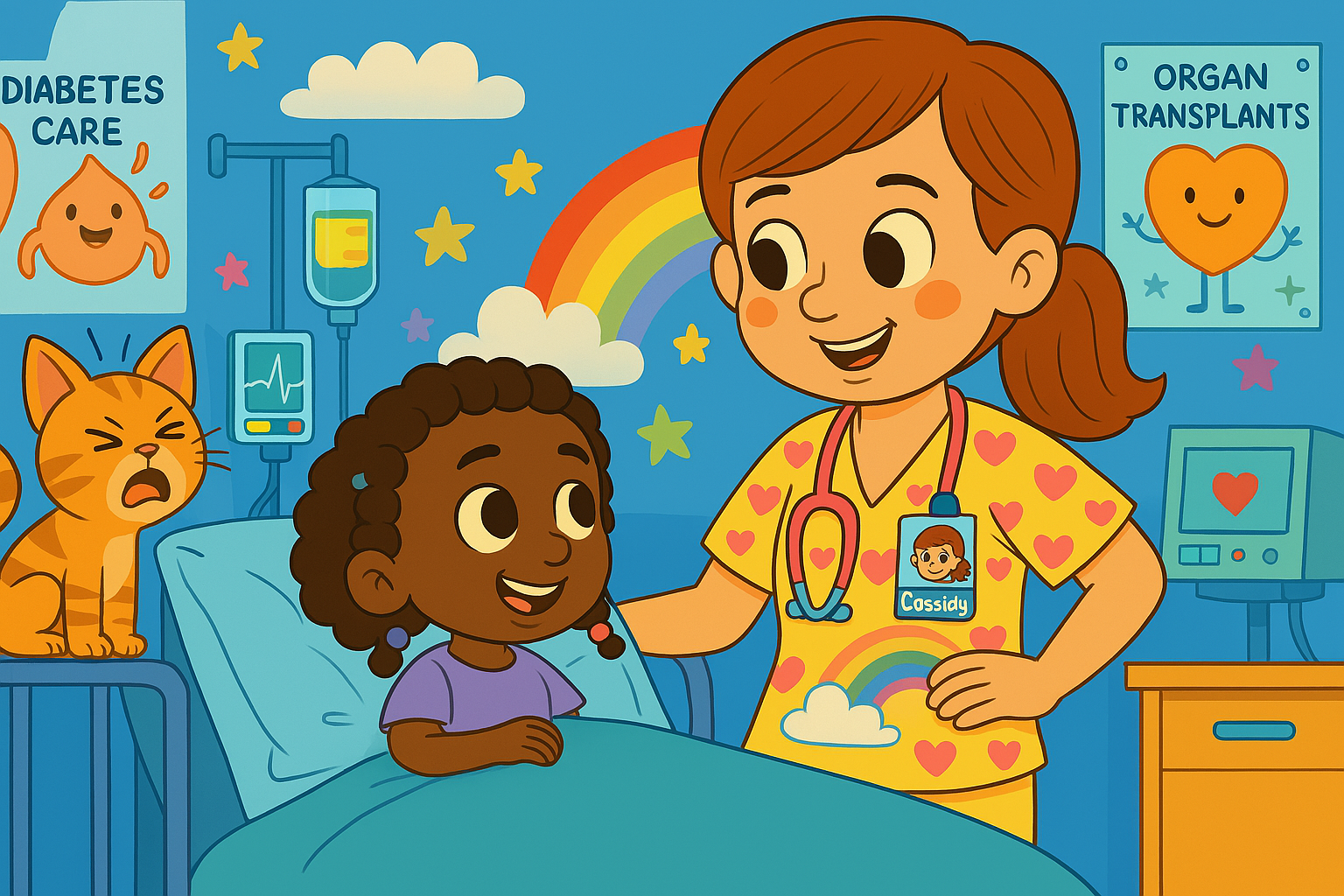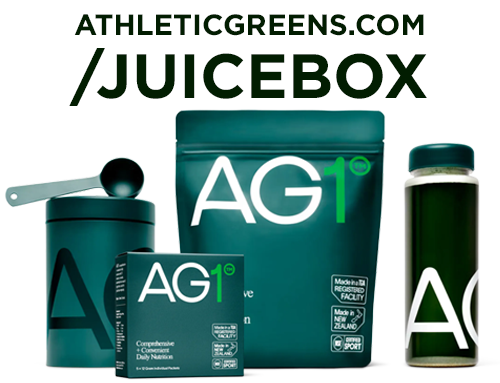#1200 Defining Diabetes: Lipohypertrophy
Scott and Jenny Smith, CDE define the terms at the center of your type 1 diabetes care.
You can always listen to the Juicebox Podcast here but the cool kids use: Apple Podcasts/iOS - Spotify - Amazon Music - Google Play/Android - Radio Public, Amazon Alexa or wherever they get audio.
+ Click for EPISODE TRANSCRIPT
DISCLAIMER: This text is the output of AI based transcribing from an audio recording. Although the transcription is largely accurate, in some cases it is incomplete or inaccurate due to inaudible passages or transcription errors and should not be treated as an authoritative record. Nothing that you read here constitutes advice medical or otherwise. Always consult with a healthcare professional before making changes to a healthcare plan.
Scott Benner 0:00
Hello friends and welcome to episode 1200 of the Juicebox Podcast about that
in honor of Episode 1200, I'm bringing back a favorite of yours, the defining diabetes series. Jenny Smith and I are gonna define terms that you use every day with your diabetes care. Today we're going to be talking about here we go. LiPo hypertrophy lipo, you'll see, nothing you hear on the Juicebox Podcast should be considered advice, medical or otherwise, always consult a physician before making any changes to your health care plan. Don't forget to save 40% off of your entire order at cosy earth.com. All you have to do is use the offer code juice box at checkout that's juice box at checkout to save 40% at cosy earth.com. When you place your first order for ag one with my link, you'll get five free travel packs and a free year supply of vitamin D. Drink ag one.com/juicebox if you have type one diabetes, or are the caregiver of someone with type one and a US resident, please go to T one D exchange.org/juicebox. and complete the survey. Your answers will help to move type one diabetes research board that may help you to T Wendy exchange.org/juice box this show is sponsored today by the glucagon that my daughter carries, G voc hypo pen, find out more at G voc glucagon.com. Forward slash juice box. If you're living with diabetes, or the caregiver of someone who is and you're looking for an online community of supportive people who understand, check out the Juicebox Podcast private Facebook group Juicebox Podcast type one diabetes, there are over 41,000 active members and we add 300 new members every week. There is a conversation happening right now that would interest you, inform you or give you the opportunity to share something that you've learned Juicebox Podcast, type one diabetes on Facebook. And it's not just for type ones, any kind of diabetes, any way you're connected to it. You are invited to join this absolutely free and welcoming community. Jenny, we're going to do something that we have not done in a while. And I think yours actually we're going to add to the defining diabetes list.
Unknown Speaker 2:42
It's been a while I
Scott Benner 2:43
remember how we used to do this.
Jennifer Smith, CDE 2:44
I do we had quite a list. I think it came from people as well as some of the things that we had put down that we really wanted to make sure were defined Correct. Yeah, that's awesome. Yeah, we
Scott Benner 2:57
have a series of over 50 different terms. So we're going to add to it today. I'm going to start off with one that I know I can't pronounce so that we can all laugh and move on. Ready? Wait, I might get this right. LiPo hypertrophy. Hyper lipo hypertrophy, yes. Okay.
Jennifer Smith, CDE 3:16
What is that? You know, can you break the word apart and try to figure it out with LiPo
Scott Benner 3:21
light. Okay, so when I get liposuction, it sucks fat out of me. So I'm gonna go fat. Yep, hyper. So hypo means high hyper means low. Trophy
Jennifer Smith, CDE 3:41
Well, I will essentially say you did a really great job. You're correct. Thank you. So it has to do with the increased sort of development of fatty stores, underneath the skin, and most common in anybody who frequently puts an injection of something or an infusion of a substance underneath their skin. So I quite honestly, what does it mean in realm of diabetes? This is the biggest reason that we really encourage rotation of where you're injecting or infusing insulin,
Scott Benner 4:14
okay. So if I keep using the same spot over and over and over again, I get lipo hypertrophy. Okay. And that is like lumpy fatty tissue that stops my insulin from absorbing Well,
Jennifer Smith, CDE 4:29
or on the opposite kind of along the same lines, I guess not opposite, but it can decrease the way insulin absorb is absorbed, meaning it changed its timeline of action, right? You might get spotty absorption, you might get in some areas, maybe literally no absorption, or you might get absorption at a later time than you really wanted the insulin to act at. So again, I'll
Scott Benner 4:54
read from Cleveland Clinic we haven't done this no opera I read. LiPo hypertrophy is a lump of fatty tissue under your skin caused by repeated injections in the same place. It's common in people with diabetes, label hypertrophy can affect your body's ability to absorb insulin and cause serious complications. Now, if I keep going through Dr. Google, can I reverse it? 95% of cases of insulin related lipo hypertrophy, switching to a new kind of insulin and rotating injection sites is an effective treatment, why would I want to switch insulin?
Jennifer Smith, CDE 5:28
Well, some people may have a, they might eventually develop a sensitivity of sorts to one brand of insulin right all of our current day insulins made by different companies, they all have a slightly different chemical structure to it different additives, if you will, to make it work the way that it's going to work. And so some people are more sensitive to one brand versus another and or one brand might work better compared to another. Some people also may actually develop more lumpy fatty kind of areas from one brand versus another. But the biggest reason the top of the iceberg reason is really that you're just not rotating your site. You're just injecting or infusing in the same area. So consistently, that your body decides it's going to deposit a whole bunch of stuff that shouldn't be there. So
Scott Benner 6:25
I don't let me pick through this for a second, why would a person continually use the same spot? Is it does it get deadened and doesn't feel as bad from a needle? Is it just comfort like psychological comfort?
Jennifer Smith, CDE 6:36
I think all reasons. Honestly. psychological comfort, yes, some people are just opposed to certain areas, pinching up injecting or infusing, you know, an insulin pump site in one particular place versus another. Pump sites, especially the tube pumps are not as easy to place in all areas on the body. And that's where a tubeless pump could be an advantage for somebody who maybe has overused an area might be willing to use something like the back of their arm, but they don't want a tube hanging out or that they have to tape down. So potentially changing to a new type of pump might be an advantage for somebody in that case. Yeah, I
Scott Benner 7:18
wouldn't have had any, like personal experience with this had I not started using GLP. So it's a once weekly self injector. And as I asked the question, I thought, oh, dummy, you know the answer to this already, because it's happened to you. I think to myself, like Well, I'll try another side. Or I'll go here and as I go to do it, I get nervous. And I'm like, This is so stupid. It's not going to feel any different than it felt over here. Like what am I? But I guess it's the same exact thing. But I guess after a week or two of it, like you do it here and it works. You go okay, well, I know this doesn't hurt. Is it gonna hurt over here? Like they're they mean like I actually had to stop myself. You can hear me because I inject on those episodes. Like I do it live. I actually one time was like, oh my god, is this gonna hurt and I was like, What is wrong with you? saying this out loud. Yeah. Why am I letting people hear this? But But Okay, so that's what I mean. I think that the rotation has to start, especially if it's with a kid. I think you have to start early or you do start it's almost like it becomes a rule of the child like oh, I can't inject my arm. I do it in my leg. And I do think that that happens it turns into a rule in their head a little bit.
Jennifer Smith, CDE 8:23
Absolutely. In fact, I remember this was years ago. If you
Scott Benner 8:27
take insulin or sulfonylureas you are at risk for your blood sugar going too low. You need a safety net when it matters most. Be ready with G voc hypo pen. My daughter carries G voc hypo pen everywhere she goes, because it's a ready to use rescue pen for treating very low blood sugar and people with diabetes ages two and above that I trust. Low blood sugar emergencies can happen unexpectedly and they demand quick action. Luckily, G vo Capo pen can be administered in two simple steps even by yourself in certain situations. Show those around you where you store Chivo Capo pen and how to use it. They need to know how to use G Bo Capo pen before an emergency situation happens. Learn more about why G voc hypo pan is in Ardens diabetes toolkit at G voc glucagon.com/juicebox. G voc shouldn't be used if you have a tumor in the gland on the top of your kidneys called a pheochromocytoma. Or if you have a tumor in your pancreas called an insulinoma visit G voc glucagon.com/risk For safety information.
Jennifer Smith, CDE 9:38
I was working with a young woman who she told me right off the bat. She was like, I don't use my arms. And I was like, okay, that's fine. And she said and the reason is because she said look at my arms. I've got really big tricep area right. And I said well it does look like you've got a pretty nice and it was on board both sides. Okay, but it was not muscle. It was because she had had diabetes since she was really little. And that was a very common place that over and over and over, as you're seeing little kids, they just get used to an area and they think, well, that must be the place. And so not until probably a couple of years before she started seeing me, did she finally stop actually injecting the whole
Scott Benner 10:23
life of it? She had what I call Oprah arms. Is that right?
Jennifer Smith, CDE 10:27
It was, I don't know what
Scott Benner 10:31
it refers to your hands. Yeah. When you put your hand up, and it hangs down underneath. I think of that as Oprah arms but only it
Jennifer Smith, CDE 10:37
wasn't hanging like you're talking about. Like they say they're like, older person are. Like, you're done waving.
Scott Benner 10:45
It waves when you're done waving. Yes, there you go.
Jennifer Smith, CDE 10:49
But yeah, hers was actually like, barely like solid, it looked more like muscle and it was not muscle.
Scott Benner 10:55
Well, could she have had it removed? I don't see why not.
Jennifer Smith, CDE 11:00
So that's, you know, in terms of the next question that usually comes when this is something people ask about is, can I get rid of it, like, will it go away, and in really severe cases, you may never get rid of all of it. But if you notice it early enough on that it's not so much that it looks like you know, a big something on the back of an arm or or on another area common is on the abdomen, like both sides of the belly button. Because it's such a common place to instruct people from the get go is a really absorptive area. And so they just get used to using it. So it's back and forth, back and forth. And they end up with these like pockets on both sides. That look, you know, there's massage, you can massage the area. But the biggest thing is you have to really just leave it alone. Yep, did not inject there for quite a while if it is going to heal at all.
Scott Benner 11:53
Let's see if you can get ahead of it that way. And if not, then you might be stuck with it well, so there's a great listen, if absorption isn't enough to make you do it not ending up with hard lumps might be a good motivator. Right?
Jennifer Smith, CDE 12:05
There you go. And you know, I think another reason, you know, just to expand on why I think another reason is depending on the age of the person, real estate on the body, depending on body size and type and what feels good and underlying, you know, those little, little tiny capillaries or little vessels, you may find places that just don't work. It's not that you wouldn't be willing to use them, but they just don't work, especially maybe for a pump site. And so then you might be more in need of using just one area. Plus, I guess as you
Scott Benner 12:37
get older, or even probably when you're younger articulation like getting to places to like have a good angle on it. I'm impressed when people like put their CGM on the back of their arm by themselves or something like that. Or on their hips in the back. I'm like, How did you like? Oh, I do it all the time. Yeah, but I mean, you gotta be pretty twisted when you do that, right? He's a mirror. The
Jennifer Smith, CDE 12:57
only time that I could not get around was when I was pregnant. My husband would help me actually put the site on because I just weighed the belly. Like there's only so much like turn you've got so he would help me but outside of that, yeah. That's
Scott Benner 13:13
interesting. Okay, well, there we go. LiPo hypertrophy. We did it. I mean, and I said it, I had to read it but whatever. Alright.
A huge thank you to one of today's sponsors, G voc glucagon. Find out more about Chivo Capo pen at G Vogue glucagon.com forward slash juicebox. you spell that GVOKEGLUC AG o n.com. Forward slash juicebox. A diabetes diagnosis comes with a lot of new terms, and you're not going to understand most of them. That's why we made the finding diabetes, go to juicebox podcast.com up into the menu and click on defining diabetes, to find the series that will tell you what all of those words mean. Short, fun and informative. That's the finding diabetes. The diabetes variable series from the Juicebox Podcast goes over all the little things that affect your diabetes that you might not think about. Travel and exercise the hydration and even trampolines juicebox podcast.com. Go up in the menu and click on diabetes variables. If you're living with type one diabetes, the afterdark collection from the Juicebox Podcast is the only place to hear the stories that no one else talks about. From drugs to depression, self harm, trauma, addiction, and so much more. Go to juicebox podcast.com up in the menu and click on afterdark. There you'll see a full list of all the afterdark episodes if you're not already subscribed or following in your favorite audio app, please take the time now to do that it really helps the show and get those automatic downloads set up so you never miss an episode. Thank you so much for listening. I'll be back very soon with another episode of The Juicebox Podcast. The episode you just heard was professionally edited by wrong way recording. Wrong way recording.com
Please support the sponsors
The Juicebox Podcast is a free show, but if you'd like to support the podcast directly, you can make a gift here. Recent donations were used to pay for podcast hosting fees. Thank you to all who have sent 5, 10 and 20 dollars!






































